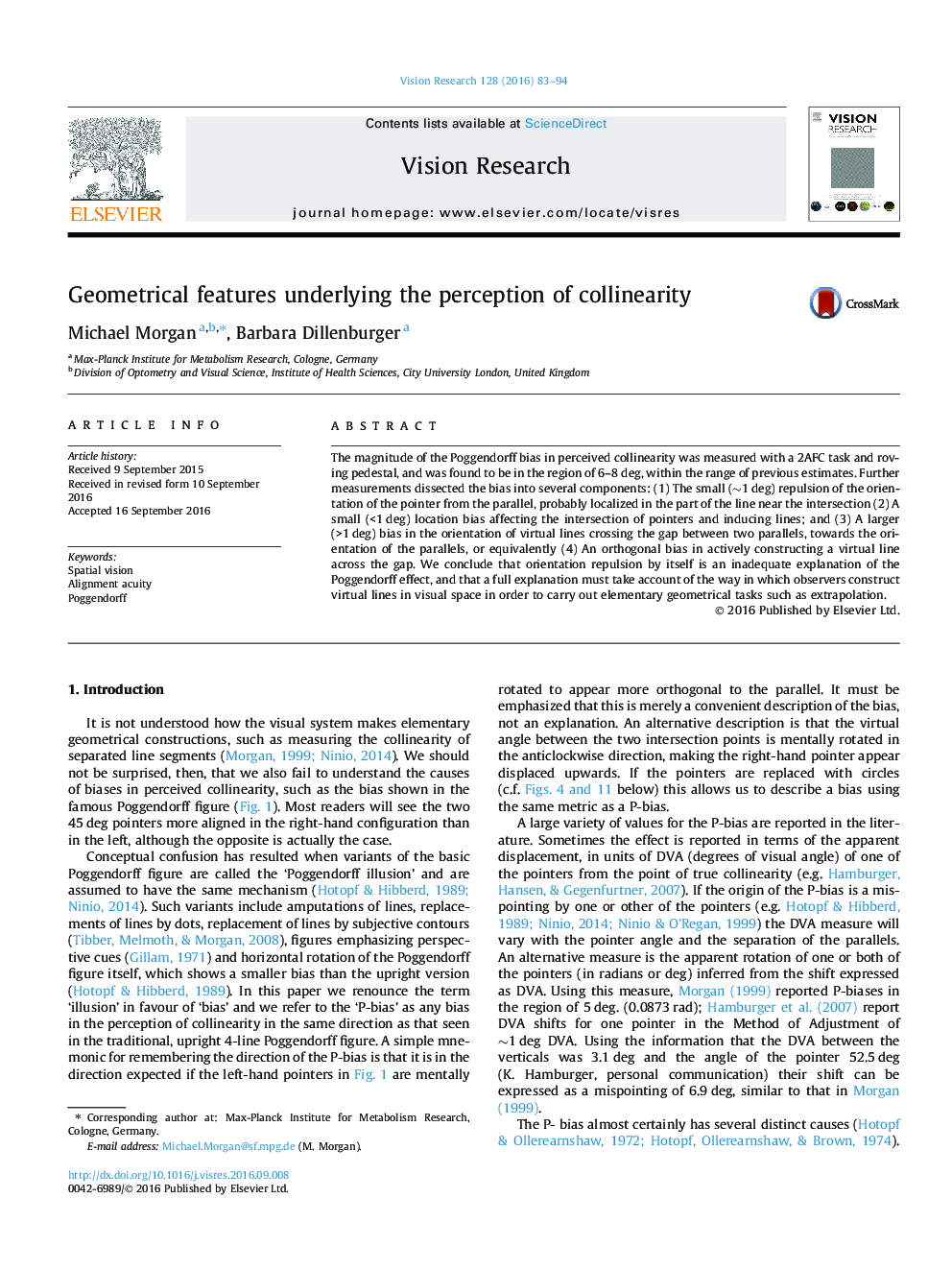| Article ID | Journal | Published Year | Pages | File Type |
|---|---|---|---|---|
| 8795409 | Vision Research | 2016 | 12 Pages |
Abstract
The magnitude of the Poggendorff bias in perceived collinearity was measured with a 2AFC task and roving pedestal, and was found to be in the region of 6-8Â deg, within the range of previous estimates. Further measurements dissected the bias into several components: (1) The small (â¼1Â deg) repulsion of the orientation of the pointer from the parallel, probably localized in the part of the line near the intersection (2) A small (<1Â deg) location bias affecting the intersection of pointers and inducing lines; and (3) A larger (>1Â deg) bias in the orientation of virtual lines crossing the gap between two parallels, towards the orientation of the parallels, or equivalently (4) An orthogonal bias in actively constructing a virtual line across the gap. We conclude that orientation repulsion by itself is an inadequate explanation of the Poggendorff effect, and that a full explanation must take account of the way in which observers construct virtual lines in visual space in order to carry out elementary geometrical tasks such as extrapolation.
Keywords
Related Topics
Life Sciences
Neuroscience
Sensory Systems
Authors
Michael Morgan, Barbara Dillenburger,
